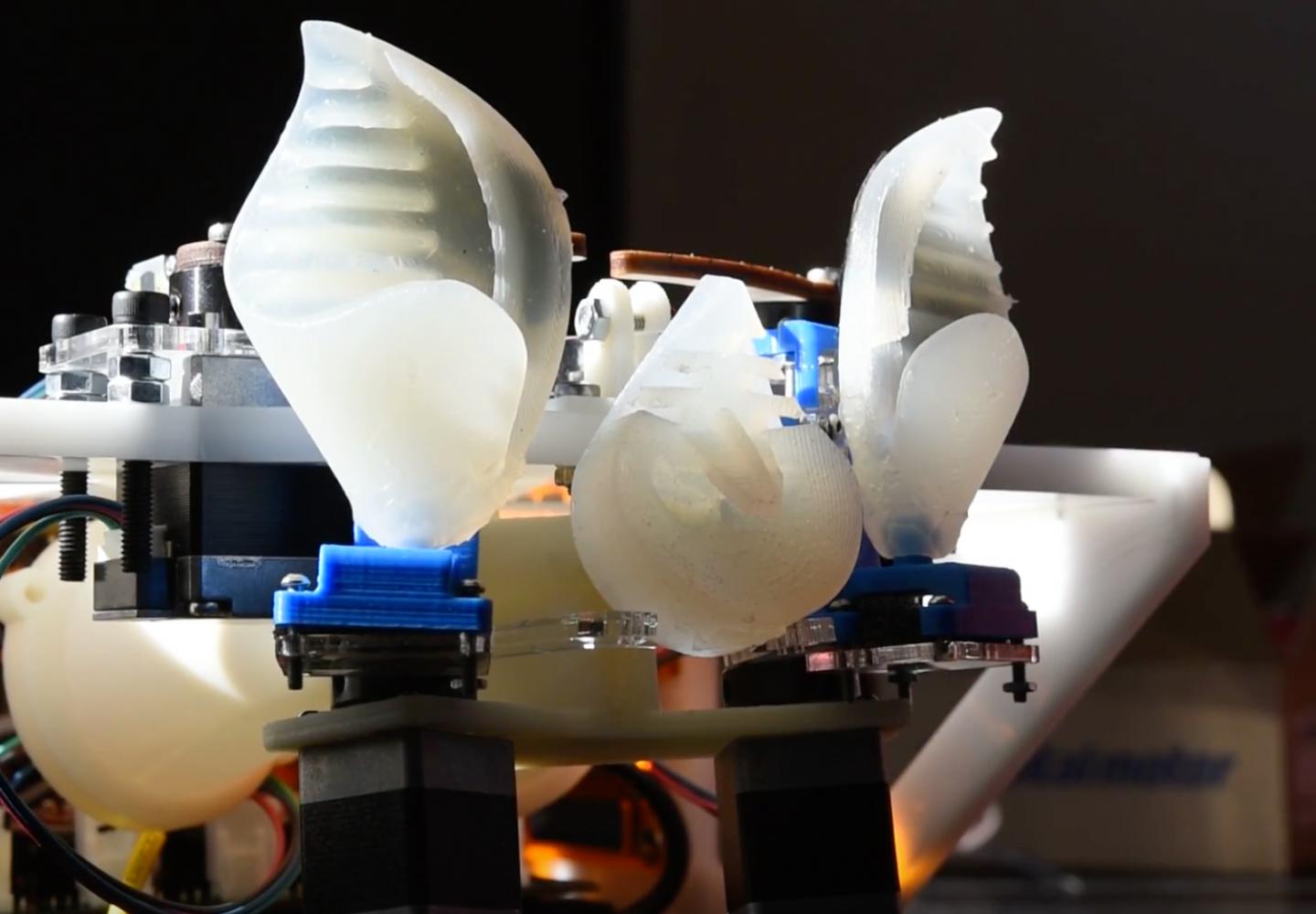
Credit: Virginia Tech
Anybody who has been passed by an ambulance at high speed has experienced a physical effect called the Doppler shift: As the ambulance moves toward the listener, its motion compresses the siren’s sound waves and raises the sound pitch. As the ambulance moves away from the listener, the sound waves get dilated and the pitch is lowered. A listener wearing a blindfold could use this Doppler shift pattern to track the motion of the ambulance.
In a paper published by the Proceedings of the National Academy of Science, the authors, Rolf Mueller, professor of mechanical engineering in the College of Engineering, and his doctoral student, Xiaoyan Yin, demonstrate that the ears of bats come with a “built-in ambulance” that creates the same physical effect. Yin and Mueller think the study of ear-generated Doppler shifts in bat biosonar could give rise to new sensory principles that could enable small, yet powerful sensors. An example of this type of sensor would be for drones that can operate in dense foliage or autonomous underwater vehicles navigating near complex underwater structures.
“The animals move their ears fast enough so that sound waves that impinge on the ears are transformed by the motion of the ear surfaces and shifted to higher or lower frequencies,” said Mueller. “In fact, the bat species studied (horseshoe bats and Old World Roundleaf bats) can move their ears so fast that Doppler shifts of around 350 Hz can be created. This is about seven times larger than the smallest Doppler shift the animals haven been shown to be able to detect.”
Video: https:/
Doppler shifts have long been known to play an important role in the biosonar system of bats such as the species studied by Mueller and Yin. The bats have the enviable ability to hunt in very dense vegetation, but to accomplish this, they have to solve the problem of how to distinguish a moth, their preferred prey, from hundreds of leaves that surround it.
“The solution these two types of bats have come up with has been to tune in on the Doppler shifts that are produced by the wing beat motion of their prey,” Mueller explained. “These ‘good Doppler shifts’ serve as a unique identifying feature that sets prey apart from static distractors, such as leaves in foliage.”
Researchers became aware early on that the bats’ own flight motion also produces Doppler shifts that would interfere with the perception of the prey-induced Doppler shifts. In the late 1960s a solution to this conundrum was discovered when it was found that horseshoe bats decrease their emission frequency by an amount that is carefully controlled to exactly eliminate any of the “bad Doppler shifts” caused by the bats’ flight velocity.
“Since these groundbreaking discoveries, the general belief in the scientific community has been that the role of Doppler shifts in the biosonar systems of these animals has been completely understood,” said Mueller. “Doppler shifts due to prey motions are ‘good Doppler shifts’ that the animals’ entire hearing system is optimized to detect, whereas Doppler shifts due to the bats’ own flight motion are ‘bad Doppler shifts’ that the animals eliminate through feedback control of their emission.”
While Mueller and Yin found speculation in the literature of the early 1960s that bats may be producing Doppler shifts with their own ear motions, the idea was never followed up with experimental work.
The work conducted by Mueller and Yin has measured the motion of the ear surfaces carefully using stereo-vision based on high-speed video cameras, and the authors were able to predict how fast surfaces move in different portions of the ear. They also estimated the angle between the directions of the ear motions and the direction the bat has its biosonar pointed in and found that motion speeds and directions were aligned to maximize the Doppler shifts produced.
To show that Doppler-shifted signals entered the ear canal of the biomimetic pinna and would be accessible to bats, the researchers built a flexible silicone replicate of a bat ear that could be made to execute fast motions by pulling on an attached string.
The final piece in the research has been to find possible uses for the ear-generated Doppler shifts.
“We were able to show that the Doppler shifts produce distinct patterns over time and frequency that can be used to indicate the direction of a target,” said Mueller. “In the context of these bat species’ biosonar systems, they typically concentrate and emit most of their ultrasonic energy in a narrow frequency band. However, for telling the direction of a target, it is usually convenient to look at how multiple frequencies are transmitted by the ear and the ‘spectral color’ that results. The Doppler shift patterns produced by the ear motions could give these bat species the option to concentrate their energy in a narrow frequency band yet be also able to tell target direction.”
###
Media Contact
Lindsey Haugh
[email protected]
Original Source
https:/
Related Journal Article
http://dx.



